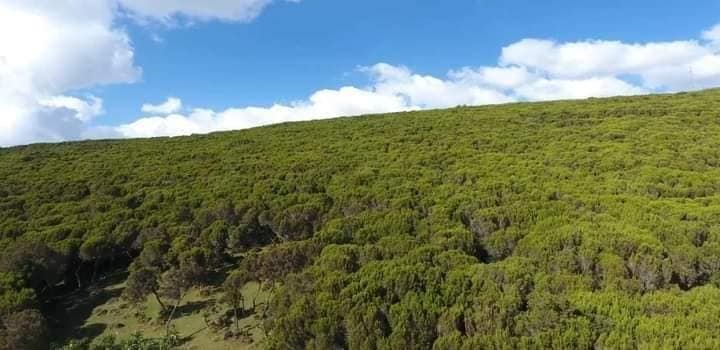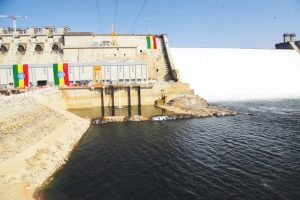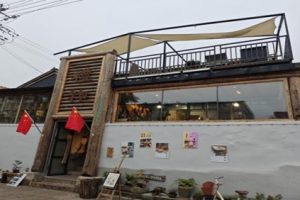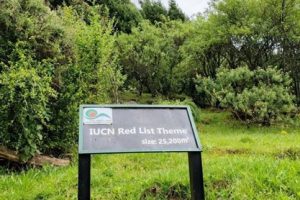
BY DARGIE KAHSAY
In Ethiopia, the Afro-alpine ecosystem is known for its diversified biodiversity and rich natural resources, which are found in the mountain epics. Ethiopia has a huge afro-alpine ecosystem, which takes around 80 per cent of the African afro-alpine ecosystem. This ecosystem is the major source of surface water with its rivers and springs. This ecosystem makes Ethiopia the water tower of Africa and major rivers in Ethiopia are originating from the afro-alpine ecosystem areas. This ecosystem takes comparably stable weather conditions and high rainfall.
In a recent interview with The Ethiopian Herald, Girma Eshete (PhD), a Conservation Biologist and Lecturer of Wildlife Conservation at Bahir Dar University said that Ethiopia has a huge afro-alpine ecosystem and this ecosystem helps Ethiopia to have unique endemic wildlife and plant species. Almost all endemic wild animals of Ethiopia are mostly habituating in this ecosystem and this ecosystem is the major source of water for the country, including the lowland part of the country and its neighbours. Ethiopia has 11 transboundary rivers and most of these rivers originate from this ecosystem.
The afro-alpine ecosystem is found 3,200 meters above sea level and it is the home of diversified plant and wildlife species. Found above 4,100 meters above sea level, the Choke Mountain is among the naturally rich afro-alpine ecosystems and the major water sources of Ethiopia, including the world’s longest river, the Blue Nile River. Choke covers around five woreda administrations.
Mount Choke is founded in the East Gojam Zone of Amhara Regional State, around 38 kilometre North of East Gojam Zone capital, Debre Markos town and 325 kilometres from Bahir Dar city, the capital city of Amhara regional state. According to a local media report, Choke Mountain becomes a community reserve area in recent years as the area was affected by overgrazing and agricultural expansion. To protect the area from deforestation and degradation, efforts are underway to conserve the area by mobilizing the community, according to Bekur Magazine.
and covers 53 thousand 558 hectares of land within five woreda administrations namely Sinan, Debay Telat gen, Sedie, Bibugn and Machakel. According to research, the Choke landscape consists of 86 per cent mountainous, 12.5 per cent semi-lowland and 1.5 per cent valley.
Mount Choke is commonly known as “the water tower”, as it is the origin of 59 local rivers and more than 273 streams. In addition, the Choke area is the main source of water for the world’s longest River, the Nile. According to Research, the Choke area contributes more than 9.5 per cent water of the world’s longest River, the Nile River. With this huge surface water potential, Mount Choke is among the major surface water sources of Ethiopia that make the country the water tower of Africa.
With this surface water potential, Mount Choke becomes among the major water source highlands of Ethiopia not only for Ethiopia but also for the downstream countries of the Nile Basin, Egypt and Sudan. This mountain contributes more than 9.5 per cent of water for the Nile River, which makes the area among the most crucial water sources for the world’s longest River.
According to Bekur Magazine, Mount Choke is among the highland areas of Ethiopia with over 4,100 meters above sea level. This ecosystem, according to research, helps Ethiopia to get regular rainfall both in the winter and summer seasons. In addition, since the area gets adequate rainfall with smooth and suitable weather conditions, the Choke basin is the most suitable area for agriculture.
Researchers believed that the mountain was created some 24 million years ago by the last volcano that erupted in the area. Though the forest coverage decreased over time, according to the people habiting around Choke, the area was covered by a dense forest. But through time, its forest coverage has declined, though currently, efforts are underway to conserve and recover the area. Still, the has a huge forest-covered area from recent years the conservation of Mount Choke gets new attention as it is named a community-reserved area.
Even though its forest has declined, still, the area’s weather is suitable which makes the area among the biodiversity hotspot areas in Ethiopia. Mount Choke is among the biodiversity hotspot areas with its adequate rainfall and suitable weather condition. According to research, Choke has over 85 different plant species including endemic plant species found only in Ethiopia. In addition, this ecosystem is home to over 16 mammal wildlife species and over 41 bird species.
Researchers also argued that this area was a habitat for the Ethiopian Wolf, endemic to Ethiopia, though the wolf is currently not habituating in the area. Efforts are underway to reinstate the Ethiopian wolf to this ecosystem as conservation efforts are underway.
Speaking to Bekur, Andargachew Dessie, a resident at Zelalem Desta Kebele in the Choke area said that in the past the area’s forest coverage was huge and very dense. “In the past, due to the density of the forest, people
could not travel within the forest, but now both its density and forest coverage became decreased,” he said. According to him, cutting the trees to build houses, for cooking and for agricultural expansion affected the forest coverage of the area. With the continuous misuse of the forest and lack of conservation efforts in the past has affected the area.
But, starting in recent years conservation efforts and research are underway to conserve this naturally critical ecosystem. Understanding the necessity of protecting and conserving this ecosystem, basin development projects, and community-based conservation projects were launched to conserve the area and rehabilitate the affected parts of the area. In addition, Debre Markos University also established Choke Research and Development project to support conservation efforts with scientific research.
Though efforts are there to conserve the area, still, it needs strong interventions from all concerned stakeholders. In addition to local efforts to conserve the area, the downstream countries that are the most beneficiaries of the Nile River waters should also support the local efforts to conserve this water tank. Since the rural people livings in the area do have not access to electricity and their income depends only on traditional agriculture, it is a tough task to easily conserve the area without total livelihood change in the community. What makes it tough is that the area is among the densely populated areas and transforming the way of life of the people is a tough task to conserve this ecosystem.
The Ethiopian Herald November 13/2022





